Wire has been used in making jewelry in the Egyptian civilization and also in Europe during the Iron and Bronze Ages. The use of wire in sculpting is only very recent and started in the 20th century. Wire sculpture is exclusively produced out of wire. The Australian Wire Sculpture artist Glenn Doyle used galvanized wire to sculpt Australian wildlife, and many of his works are on display all over the world. Galvanizing is a zinc coating on steel or iron wire in order to protect it from rusting. On account of this feature this type of wire was used for decorative sculptures in public parks or open air displays. Beginners use steel wire for wire art while senior wire artists have additionally used aluminum, bronze, and copper wires on account of their different properties like color, malleability, and resistance to environmental conditions. Wire art is like a third dimensional line art. It is like drawing a figure continuously with a pencil without lifting it from the paper throughout the activity. To keep the contours of wire lines perfectly smooth, different tools like flat nose pliers, chain nose pliers, bent chain nose pliers and cutters, etc. are used.
1. Alexander Calder
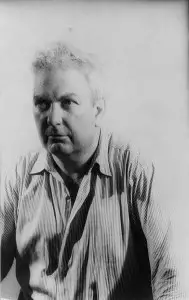
Alexander Calder was born on July 22, 1898 and died on November 11, 1976. He is one of the foremost wire sculptors. His first artworks included the ‘Two Acrobats,’ ‘Romulus and Remus,’ and ‘Hercules and the Lion.’ At the request of a toy merchant, he developed miniature, mobile prototypes of different circus performers like the sword eaters and lion tamers. His sculptures, exclusively made of wires, were exhibited at the Weyhe Gallery in New York City in 1927. Calder realized that the wire sculpture has a great potential, and there was much to be explored and developed by future artists. He opined that an object behind an object should be visible to give depth to the artwork, and the wire art provided this visibility more than any other art form.
2. Ruth Asawa
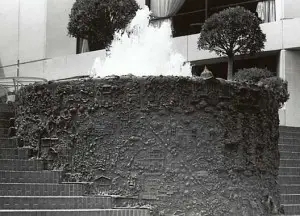
Ruth Asawa was born in Norwalk, California on January 24, 1926. She attended Japanese American Internment Center High School, Milwaukee State Teacher’s College, and Black Mountain College. She is a Japanese-American wire artist and became famous after the repeated display of her works in annual exhibitions at the Whitney Museum of American Art and in the Sao Paulo Art Biennial. As a result of her sculpture ‘Andrea,’ the mermaid fountain at Ghirardelli Square, she is known as the ‘Fountain Lady.’ Her other notable wire sculptures are: the Hyatt Union Square Fountain and Aurora and the origami-like fountain in San Francisco. In addition to many other honors, she won a gold medal from the American Institute of Architects and the Asian-American Art Foundation’s Golden Ring Lifetime Achievement Award.
3. Elizabeth Berrien

Elizabeth Berrien was born in Oakland, California in 1950. She was one of the leading figures of the wire sculpture movement. She loved watching animals since her early childhood and ants, bees, cats, and birds were her favorite subjects. She had a pet turtle, and she tried to knit a blanket for the turtle. Her wire sculptures are on display throughout the world in renowned art galleries, museums, public parks, and private homes. She was good reader in kindergarten and loved plane geometry and math in high school, and that paved the way to her brilliant wire sculpture career later on. She was inspired by her tutor Kenneth Curran who, giving her a roll of wire said, ‘Here, kid, take this wire and mess with it,’ and this was a great lesson for her.
4. Sophie Ryder
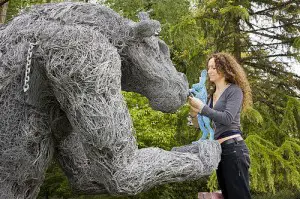
Sophie Ryder was born in London, England in 1963. She studied combined art at the Royal Academy of Arts and received her diploma in painting. She was, however, more inclined towards sculpture. ‘Lady Hare’ is her most famous work, and it is a figure with the head of a hare and the body of a woman, perhaps a perception of her own body. When asked during an interview, why hares predominated her works, she replied, ‘Well, I find it difficult answering that question because I don’t really know the answer; it’s the same as asking me why I make sculpture, and the answer is because I feel driven to.’
5. Lovatt Ivan
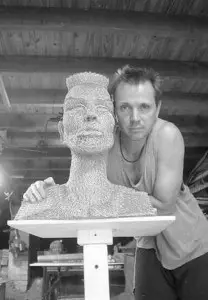
Lovatt Ivan was born in Nairobi, Kenya. He spent his childhood in many countries including; Wales, Germany, England, and Africa. He is renowned for creating superb portraits using only chicken wire. His wire portraits include: ‘Abraham Lincoln,’ ‘Richard Nixon,’ ‘The Beatles,’ ‘Andy Garcia,’ ‘Sir Edmund Hillary,’ ‘Andy Warhol,’ ‘Dame Edna,’ and many others. Ivan has sculpted African wildlife. His lifelike portraits of the famous people have earned him worldwide fame. He has won many awards, and his works have been displayed in the most prestigious art galleries and museums of the world.
6. Gavin Worth
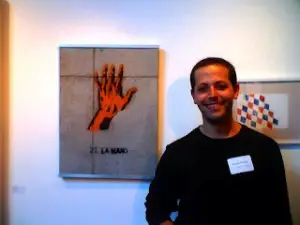
Gavin Worth was born in Zimbabwe in 1981 and was brought up in Las Cruces, New Mexico. He lived for about ten years in San Francisco and worked there as an actor and musician for some time before leaving for Cairo, Egypt to teach at the American International School. He did not receive any formal education in wire sculpture but he created world class wire artwork. His sculptures capture ordinary moments in human life in the extraordinary wire forms. They include actions like; a woman combing her hair, a mother cradling her baby, and a face looking at something curiously.
7. Bronwyn Joy Oliver
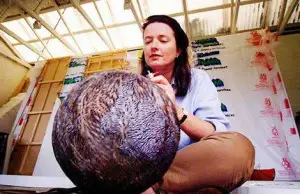
Bronwyn Joy Oliver was born in Gum Flat, New South Wales on February 22, 1959 and died on July 11, 2006 at the age of 47. She was educated at the College of Fine Arts, Australia and Chelsea School of Art, England. She received the Moet & Chandon Australian Art Fellowship in 1984 and settled in Sydney where she taught and practiced wire art. She committed suicide in 2006. Her famous works include ‘Vine’ which is an 18.5 meters high sculpture in Sydney. ‘Magnolia and Palm’ is on display in the Sydney Botanical Gardens, and ‘Big Feathers’ is displayed in Brisbane’s Queen Street Mall. Her works are displayed at the National Gallery of Australia, National Gallery of Victoria, and Art Gallery of New South Wales.
8. Angela Hook
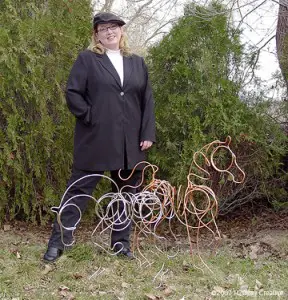
Angela Hook graduated from the Alberta College of Art and Design in Calgary, Alberta, but answering to a question she stated ‘ Although I have an artistic background, having gone to art college, I really just picked up a piece of wire lying around one day’¦once I started, I just couldn’t stop!’ On account of her acquaintance with horses since her childhood, she loves to make their wire sculptures. She remarked, ‘I see my work as linear sculpture’¦only in three dimensions.’
9. Steeve Htay

Steeve Htay was born in Burma and was a pro-democracy activist against the Burmese dictatorial military regime. He lives in Australia as a political exile. He uses aluminum wire of different gauges to produce wire sculptures which consume long hours, at times taking weeks to complete. He is a keen observer and uses video and photos for the sake of precision and completeness. He is not business minded, and his objective is ‘to make people happy. My hope is for my art to spread happiness.’
10. Derek Kinzett
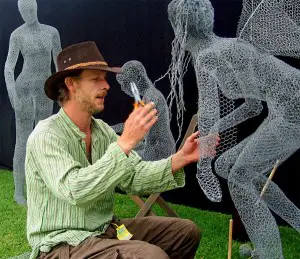
Derek Kinzett was born and brought up in Dodington Park, Gloucestershire in 1966. He majored in wire sculpture and three-dimensional designs. His work has been appreciated by renowned persons like Tim Green of the Tate Gallery, Lord Ethan Stewart, and the famous Hollywood actor Nicholas Cage. His life-size sculptures of human figures include eyes, hairs, and lips, which in wire sculpture are not easy things to do. While creating a life-size sculpture of a gardener, he worked for so many hours continuously that his hands were full of calluses.
Conclusion:
Whereas the media, materials, and tools do count in the ultimate quality of artwork, what counts most, however, is the artist behind them. A gold and platinum wire in the hands of an unskilled and unaesthetic user is very likely to produce a clumsy and grotesque work, while simple galvanized wires in the hands of a dexterous and aesthete wire sculptor may yield an excellent masterpiece. Masters of this art have produced all sorts of human and animal figures as well as superb portraits and amazing abstract art. Usually 10-28 gauge wires are used for this purpose, the 10-gauge wire being a thick wire while the 28-gauge wire is a thin wire.








November 19, 2012 11:25 pm
Number 5: Africa is not a country. It’s a continent.
February 28, 2013 6:44 pm
These pictures and artist are woderful.I never really paid attention to this type of art until today.5 pieces of wire art came into my job today which I thought was really cool until I started looking on line for some similar pieces so I can know how to price them for sale , but no luck.in finding anything.oh well .They are all of men walking after fishing.fish , pole, buckets they are just cool.all different sized and disigns.any way keep up your good work.